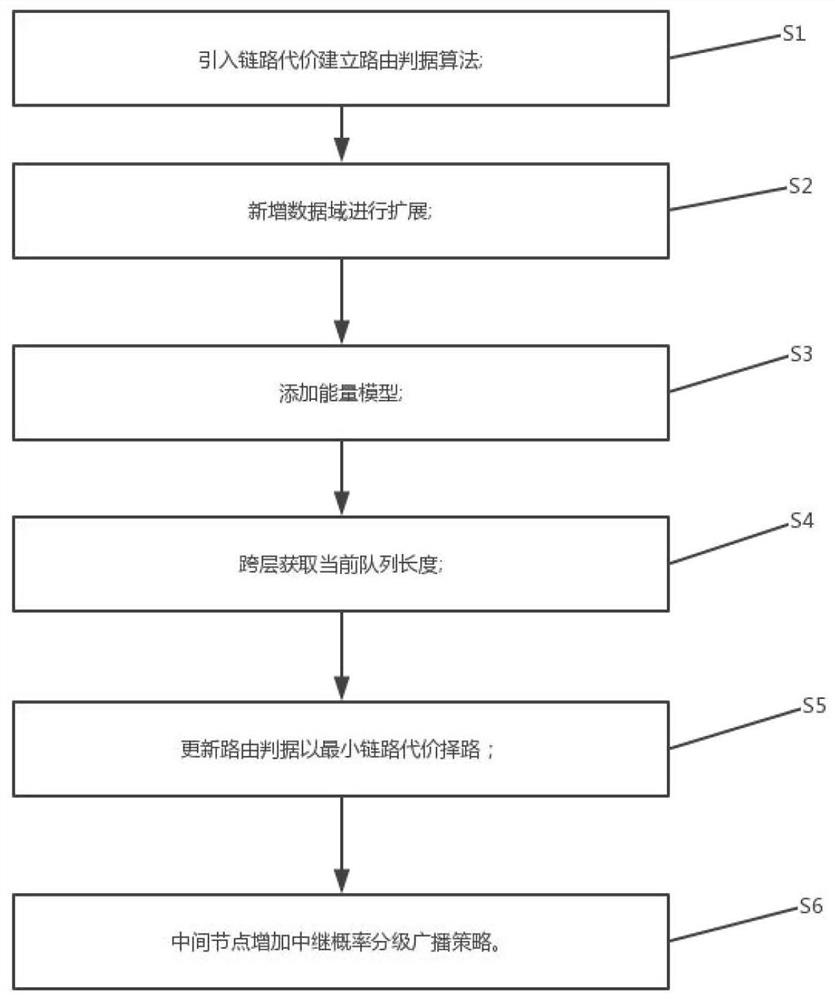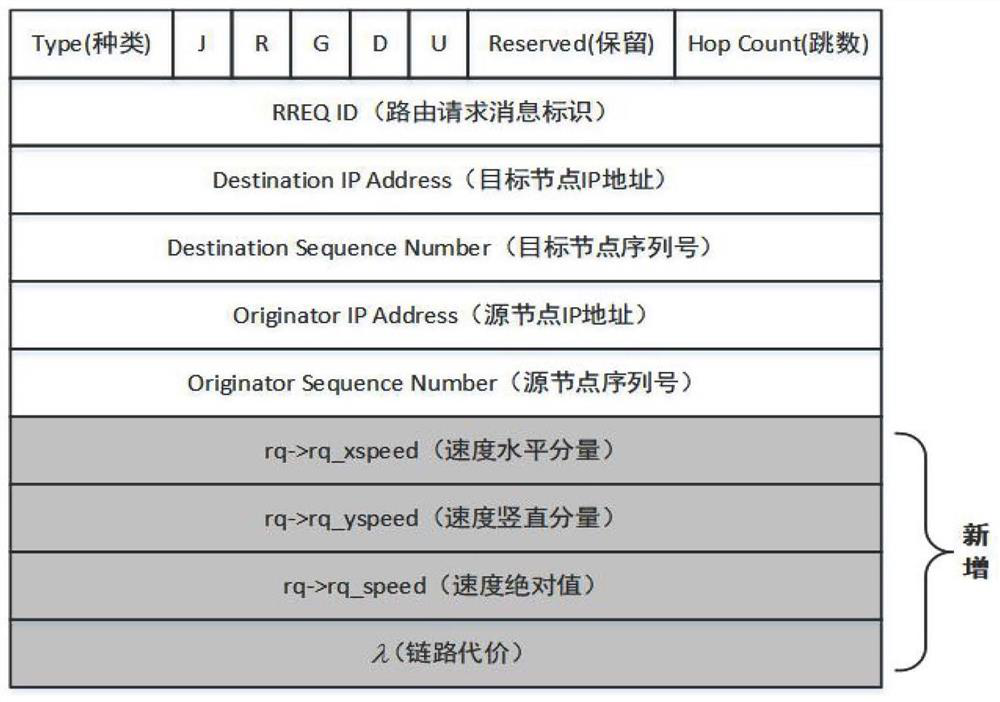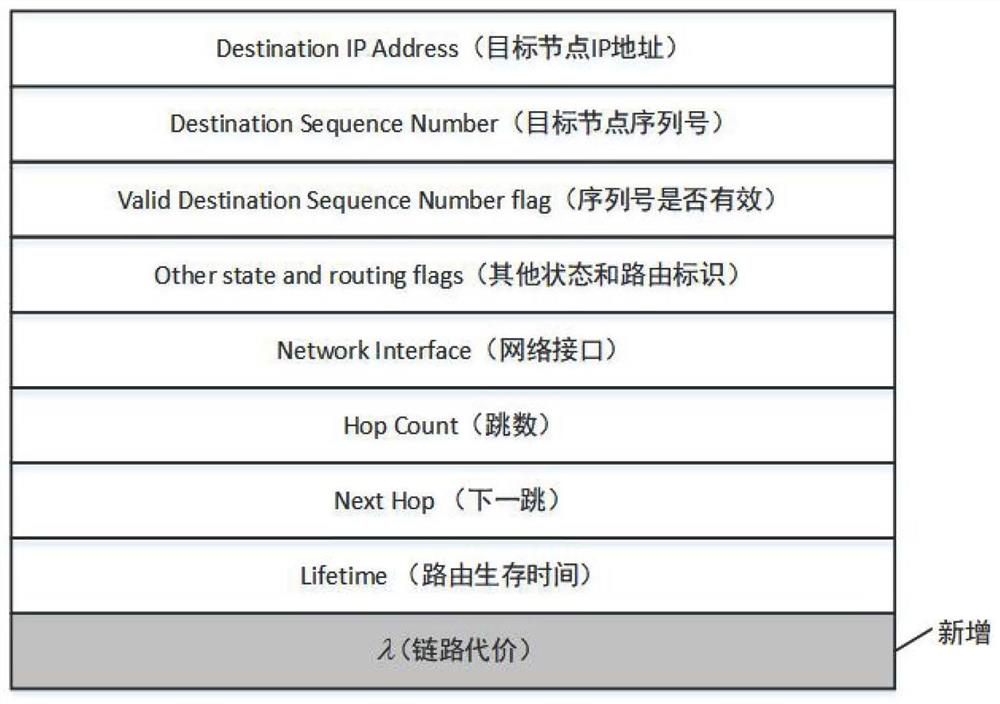Unmanned aerial vehicle ad hoc network AODV routing improvement method based on speed and energy awareness
An energy-sensing and unmanned aerial vehicle technology, applied in network topology, wireless communication, energy consumption reduction, etc., can solve problems that affect the overall performance of the unmanned aerial vehicle network, difficult practical application of unmanned aerial vehicle networking, and failure to consider the influence of physical factors, etc. , to achieve the effect of improving packet delivery rate, reducing discovery frequency, and improving overall performance
- Summary
- Abstract
- Description
- Claims
- Application Information
AI Technical Summary
Problems solved by technology
Method used
Image
Examples
Embodiment Construction
[0034] Embodiments of the present invention are described in detail below, examples of which are shown in the drawings, wherein the same or similar reference numerals designate the same or similar elements or elements having the same or similar functions throughout. The embodiments described below by referring to the figures are exemplary and are intended to explain the present invention and should not be construed as limiting the present invention.
[0035] In this application, the routing request and the routing reply can also be recorded as other names, for example, the routing request is RREQ, and the routing reply is RREP.
[0036] see figure 1 , the present invention proposes an improved AODV routing method for UAV Ad Hoc Networks based on speed and energy perception, comprising the following steps:
[0037] S1: Introduce the link cost to establish the routing criterion algorithm;
[0038] S2: Add new data fields for expansion;
[0039] S3: Add energy model;
[0040]...
PUM
 Login to View More
Login to View More Abstract
Description
Claims
Application Information
 Login to View More
Login to View More - R&D
- Intellectual Property
- Life Sciences
- Materials
- Tech Scout
- Unparalleled Data Quality
- Higher Quality Content
- 60% Fewer Hallucinations
Browse by: Latest US Patents, China's latest patents, Technical Efficacy Thesaurus, Application Domain, Technology Topic, Popular Technical Reports.
© 2025 PatSnap. All rights reserved.Legal|Privacy policy|Modern Slavery Act Transparency Statement|Sitemap|About US| Contact US: help@patsnap.com



